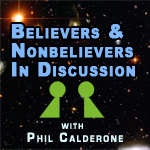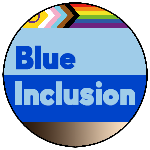“Man is made by his belief. As he believes, so he is.” Johann Wolfgang von Goethe
As my research into belief progressed it became apparent that a piece of the explanation was missing—the inherent tendency to believe.
Believence
(noun) A propensity to believe, especially via intuition or desire.
“Having a high believence makes it easier for her to dismiss evidence.”
Believent
(adjective) Endowed with a propensity to believe.
“He is a believent person.”
How we come to believe derives from several factors. Picture them as overlapping layers of influence, the merger being a person’s conclusion or belief in a concept.
Factor One: Childhood education
Knowledge gained in childhood is strong, obtained from trusted sources in familiar surroundings. Our familial and cultural environment is an intellectual womb, a place held with affection and security. We instinctively trust our parents and authority figures doubtless that what they teach us is well intentioned, protective and correct. This makes it more difficult to overcome these teachings, should they one day be intimated as incorrect.
Early knowledge is the foundation for further learning. When correct it is appropriately rock solid. When incorrect that bedrock attracts further falsehood as we tend to build confirming data on top, shielding the base from challenge and revisal.
Factor Two: Knowledge gained beyond childhood
Intellectual onset is when we begin to question what we are being taught or even what we know. As our ego forms we develop the ability to evaluate information, allowing us to correct or even dismiss it. We do however more easily accept data that reinforces what we already know, an evolutionary shortcut by which we absorb voluminous or complex information in an abbreviated form. We learn quicker this way, leaving reconsideration for a more convenient future time.
We also now become aware of a modifier to each piece of information—a degree of certainty. Imagine this as a scale of 0 to 100, with zero being absolute disbelief and 100 being absolute belief or certainty.*
Factor Three: Cultural reinforcement
Culture influences how we accept information. The most open-minded person in a pluralistic society still holds sentimental attachment to the familiar. The opinion of those around us influences our opinion of the same. Belief bubbles—isolation into one-sided data and opinion sources—are an exaggeration of this, fed by topic-specific and ideology-specific media. The internet makes information accessible to justify any position. As these idea groups take hold, social competition leads to increasingly aggressive tactics of offense and defense. Falsity and hypothesis may be presented as truth, though not typically by deception. Evidence may be misapplied, discredited or improperly interpreted.
Religious writings offer rewards and punishments such as eternities in heaven or hell. These are especially effective with the believent since they are more accepting of concepts on insufficient evidence. Social feedback provides less dramatic but effective influences—shaming, shunning within families, in-group special treatment or conversely, restriction from group benefits.
Factor Four: Intellect
This factor includes intelligence (the ability to acquire knowledge), memory strength (both to obtain and retain) and reasoning complexity. For reasoning, logic is the tool. Abilities vary from person to person, talent and skill considered. Talent is the inherent ability while skill is that which can be learned and improved upon with technique and practice.
Interestingly while low intellect can lead to false belief, sometimes with a lack of desire to tackle complex issues, high intellect can be just as problematic. The stronger the intellectual ability, the more one is able to rationalize and reinforce current positions.
Factor Five: Believence
Satisfaction, preference, enjoyment, tolerance to cognitive dissonance (the ability to hold conflicting ideas), and stubbornness (intolerance to being wrong or corrected) live here. A high believence person is more susceptible to under-justified belief. These people see meaning and purpose excessively, patterns more easily. We have all met such people—those who interpret the flow of a river as spiritual, find significance in chance events, accept karma as a balancing force, site deity as a default explanation for events or the unknown.
While ignorance of real explanations can be a factor believent people are no less intellectually capable than others. A combination of high intellect and high believence yields a person who can craft honest strong arguments against contrary evidence, creating (at least the appearance of) firm support for incorrect positions.
I suspect we will eventually find a neurochemical basis for this, just as we now believe that a balance in brain neurotransmitters to be largely responsible for personality characteristics. Believence is an involuntary feature, presumably hereditary. This contrasts with bias which can be made conscious if pointed out.
Factor Six: Bias
If you look at the number of cognitive biases we have it is easy to doubt your ability to ever make an uninfluenced decision again. Cognitive bias is the tendency to draw unjustified conclusions, to sway evaluation to a preference or preliminary condition. An amazing reference can be found at https://www.visualcapitalist.com/every-single-cognitive-bias/. The most common type is confirmation bias, the penchant to notice and overvalue data that confirms a preference. If you want to believe something (such as life after death) you are prone to finding supporting evidence and arguments, discounting those in opposition.
Factor Seven: Personality type
Various models continue to come out of more recent research. In addition to the standard Big 5 (OCEAN) model there is convincing progress on the moral foundations model; see Jonathan Haidt’s theory of moral psychology.** He identifies five components of personality—harm, fairness, liberty, loyalty, authority, and sanctity. The combined settings (low to high) of each of these makes up our personality tendency, yielding results like resistance to change, tolerance for crudeness, deference to authority, etc. He also takes a stance on intuition vs reasoning, intuition being a quick pre-thought reaction to new information or a situation. Considered judgement follows but is biased by the intuition already in effect. See https://www.believeinreality.com/the-righteous-mind-a-book-review/.
There are soft edges to the factors above, at least concerning our current ability to ascertain where one ends and another begins. If one holds a belief in spite of contrary or nonexistent evidence—for example a belief that the Earth is 6000 years old—what factors are in play? All of them. The better question is what factors dominate; a balance determines our willingness and ability to correct errors. We do not have good ways to quantify these factors, nor perhaps will we ever. IQ tests for example are notoriously controversial. What should be noted however is that any factor may be overcome by the influence of the others. Keep this in mind the next time you are tempted to dismiss another’s opinion as unfounded. Being incorrect does not mean one is being irrational.
*In fact 0 and 100 is unreachable unless one is able to suppress the capacity to reason. In practice everything we know ranges from 1 to 99; there is always an element of doubt. Though some will argue otherwise, claiming purchase on the extremes is an act of rationalization, denial or delusion.
**Watch Haidt’s TED presentation at http://www.ted.com/talks/jonathan_haidt_on_the_moral_mind?language=en. I also highly recommend his book, “The Righteous Mind.”



